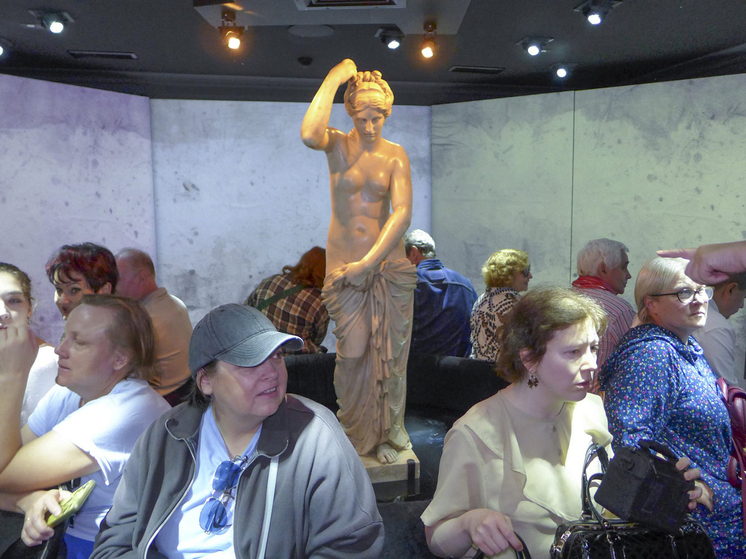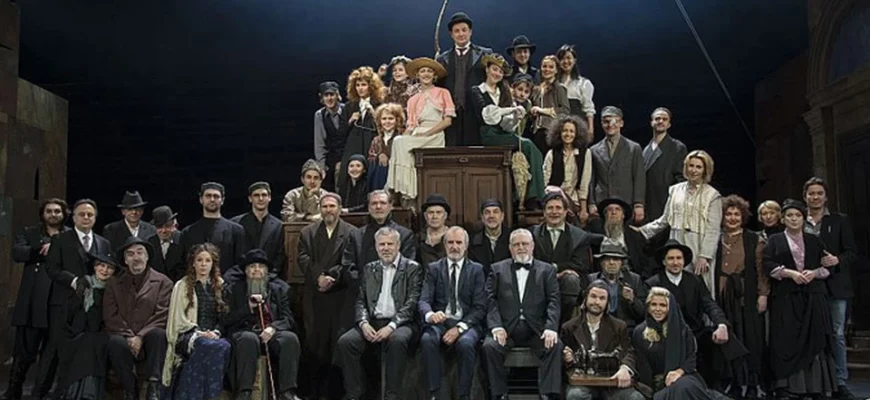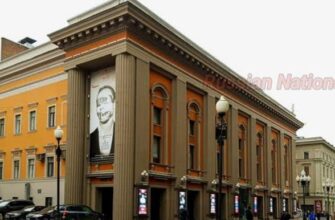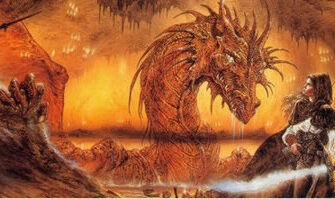Moscow`s historic Arbat Street has gained a new cultural jewel: the Vakhtangov Theater has officially opened its groundbreaking museum, dubbed “Genius Loci” (Spirit of the Place). This isn`t just another collection of dusty artifacts; it`s an immersive, technologically advanced narrative that whisks visitors through centuries of theatrical brilliance, from the 16th-century streltsy barracks that once occupied the site to the luminaries of the 21st century.
The Pantheon of Thirteen: Where Legends Reside
At the heart of the “Genius Loci” concept lies a playful nod to the number thirteen – a figure Vakhtangov staff consider auspicious. The museum`s initial gallery features an impressive assembly of thirteen legendary directors who shaped the theater`s artistic destiny. From the venerable Evgeny Vakhtangov himself, gracing the entrance, to figures like Meyerhold, Alexandra Remizova (the sole woman in this esteemed male company), Pyotr Fomenko, Yuri Lyubimov, and Rimas Tuminas, each master is given their due.
Intriguingly, their arrangement isn`t strictly chronological. Instead, a seemingly “accidental” sequence creates unexpected dialogues between these titans. Imagine Fomenko, a pioneer of Leningrad`s Comedy Theater, finding himself positioned next to Akimov, its long-serving director. For the discerning visitor, these subtle juxtapositions unlock deeper narratives, revealing intricate webs of influence and shared artistic lineage.
An Interactive Odyssey: When Artifacts Speak
What truly sets the “Genius Loci” apart is its revolutionary approach to storytelling. Forget the traditional, silent museum tour; here, Artificial Intelligence acts as your guide, and the exhibits themselves come to life, speaking in the resonant voices of celebrated actors. This fusion of cutting-edge technology and profound artistic heritage creates an experience that is both intellectually stimulating and deeply moving.
The journey takes an even more surreal turn in a dedicated room featuring a rotating circular sofa, designed to accommodate precisely thirteen visitors per group. At its center stands an antique statue, inherited from the mansion`s former owner, Berg. This enigmatic figure serves as the primary “narrator,” weaving tales as the walls around you transform into a planetarium-like screen. A volumetric video projection transports you through the theater`s origins, starting from the military barracks of old Moscow in the 16th century.
But the narrative doesn`t stop there. The walls, once screens, dramatically “open up” to reveal hidden compartments brimming with further exhibits. The story progresses, moving into the post-war decades, told from a truly unexpected perspective: the voice of a fragment of a German aerial bomb. This fragment, a grim relic from the night of July 23-24, 1941, when the theater suffered direct hits, killing two artists and a worker, offers a poignant and visceral connection to the past. It’s a somber, almost morbidly poetic narrator, lending an ironic twist to the devastation it once wrought.

Echoes of Resilience: A Collection of the Profound
The museum’s collection of artifacts is as diverse as it is compelling, offering tangible links to pivotal moments in the theater`s history. Visitors can marvel at authentic treasures such as the actual rifle used in the iconic 1937 production of “Man with a Rifle,” where Boris Shchukin`s portrayal of Lenin set an enduring standard. Also on display are Soviet orders bestowed upon the Vakhtangov Theater, which mysteriously vanished in the 1990s only to be rediscovered, remarkably, entombed within the theater`s walls.
Beyond these, the exhibits include countless documents, fragments of the building`s original decor, stage props, intricate costumes, and personal effects belonging to revered directors and beloved actors. The aforementioned German bomb fragment is also a genuine artifact, unearthed from the very ruins where the theater lay shattered until its reconstruction in 1947.
Among the more recent additions are the working notes of Rimas Tuminas, the Lithuanian director credited with revitalizing the Vakhtangov Theater in the early 2000s. For his colleagues and admirers, Tuminas remains “the most Russian Lithuanian director,” a master whose legacy continues to inspire.
The Enduring Paradox: Art Amidst Adversity
Perhaps the most striking paradox within the “Genius Loci” project is revealed through its smallest, most unassuming exhibits. Consider the tiny scraps of paper from 1941. At a time when the nation was engulfed in war, and every shred of paper, every drop of ink, was a precious commodity, the Vakhtangov Theater, then evacuated to Omsk, continued to issue tickets. These miniature admissions, no larger than a tram ticket, serve as a profound testament to the unwavering power of art. They quietly proclaim that, in any circumstance, art serves a higher purpose, contributing to the spirit of perseverance and ultimately, victory – a message as relevant today as it was then.
The Vakhtangov Theater`s new museum is not merely a chronicle of the past; it is a vibrant, breathing entity that invites reflection on the enduring spirit of creativity, resilience, and the indelible “genius of place” that defines one of Russia`s most celebrated cultural institutions. It`s an essential pilgrimage for anyone seeking to understand the soul of Russian theater.








